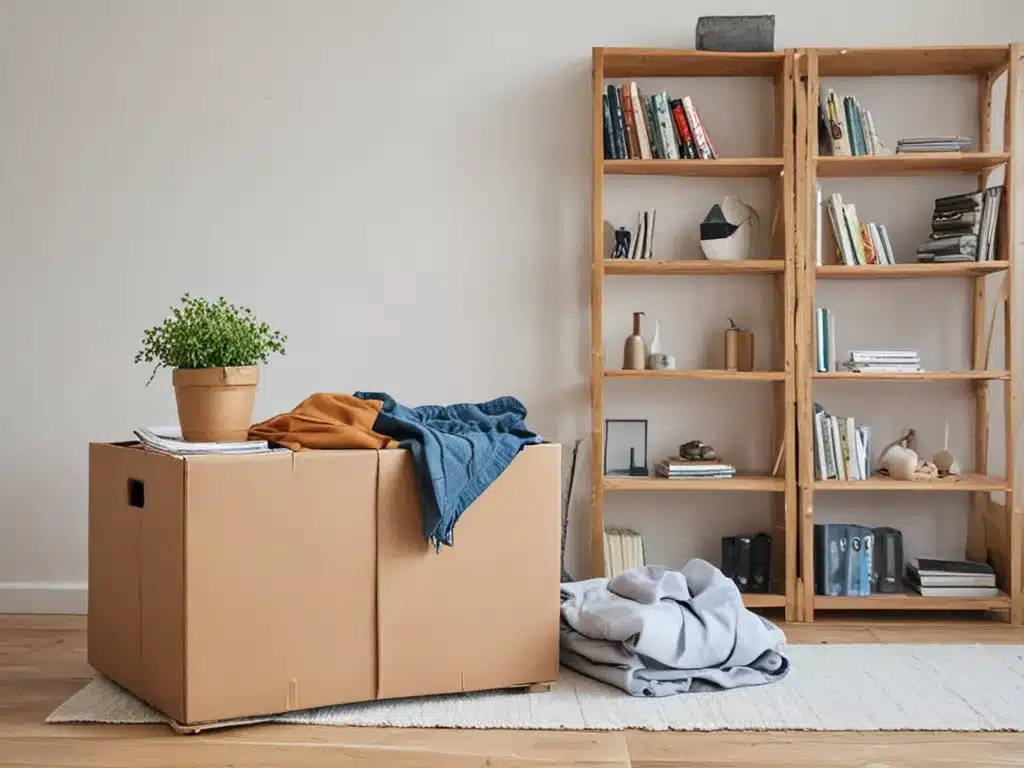Get Organized and Make a Plan
Getting organized is the first step towards effectively decluttering your home. Having a plan in place will help you tackle the clutter in a systematic way and prevent feeling overwhelmed.
Here are some tips to get started:
-
Walk through each room and decide which areas need decluttering the most. The kitchen, bedroom closets, and home office tend to collect the most clutter. Focus your efforts on 1-2 rooms at a time.
-
Set aside short blocks of time – like 30 minutes a day or a few hours over the weekend – dedicated to decluttering. Commit to sticking to your timeline.
-
Make decluttering fun! Play your favorite music, invite a friend over to help, or reward yourself when you meet your goals.
-
Sort items into categories like trash, donate, sell, or keep. This makes the process less daunting than tackling an entire room at once.
-
Schedule donation pickups so clutter doesn’t re-accumulate.
Start Small and Tackle Easy Tasks First
Trying to thoroughly declutter your entire home in one go can quickly lead to burnout. Focus on quick, high-impact tasks first to build momentum. Some examples include:
-
Cleaning off flat surfaces like counters, tables, dressers. Just putting items away makes a big visual difference.
-
Decluttering a drawer or cabinet. Start with kitchen junk drawers, bathroom vanities or bedroom nightstands.
-
Sorting the mail and resolving old bills and paperwork.
-
Tidying up entryways and coat closets since these high-traffic areas collect clutter quickly.
-
Wiping down surfaces to instantly make things look cleaner.
Declutter by Category
Decluttering by category or type of item helps you make decisions faster. Pick a category and gather those items from around your home. Common categories include:
-
Clothing – Go through closets and dressers, remove items you haven’t worn in over a year. Donate, consign, or sell quality items.
-
Paperwork – Sort through and file away important documents. Shred old bills, receipts, and statements.
-
Books/Media – Be ruthless in removing books or DVDs you won’t revisit. Donate to libraries and secondhand stores.
-
Kitchen items – Discard old food, expired spices, chipped dishes, unused appliances. Organize food pantries and cabinets.
-
Toys – Have kids pick their current favorite toys to keep. Donate the rest in good condition.
-
Furniture – Eliminate bulky furniture that is broken or doesn’t fit your space. Sell quality furniture online.
Use Storage Solutions to Prevent Recluttering
Using organized storage helps you maintain a decluttered space long-term. Some useful storage solutions include:
-
Baskets – Contain loose items like toys, blankets, and paper. Use decorative baskets for a tidy look.
-
Shelving – Wall-mounted shelves and floating shelves help maximize vertical storage. Great for books, collectibles, and plants.
-
Clear bins – Store items like craft supplies and seasonal decor so you can easily see contents.
-
Vacuum storage bags – Suck air out of clothing and bedding to flatten and compress items.
-
Hanging organizers – Use over-door hangers and wall racks in closets, pantries, garages, and more.
Maintain Decluttered Spaces
The most important step is establishing habits to keep spaces tidy after decluttering. Here are some helpful tips:
-
Institute a “one in, one out” rule – discard or donate something before bringing any new objects into your home.
-
Return items back where they belong immediately after using them so clutter doesn’t accumulate.
-
Do quick 5-minute tidy ups as part of your daily routine.
-
Coil cables and cords, use drawer organizers, install hooks – make storage intuitive and easy to maintain.
-
Designate donation bins for giveaways so you can frequently clear out unused items.
The key with decluttering is tackling it in small, consistent chunks. Don’t let perfection be the enemy of progress! Celebrate any amount of decluttering as a success.







